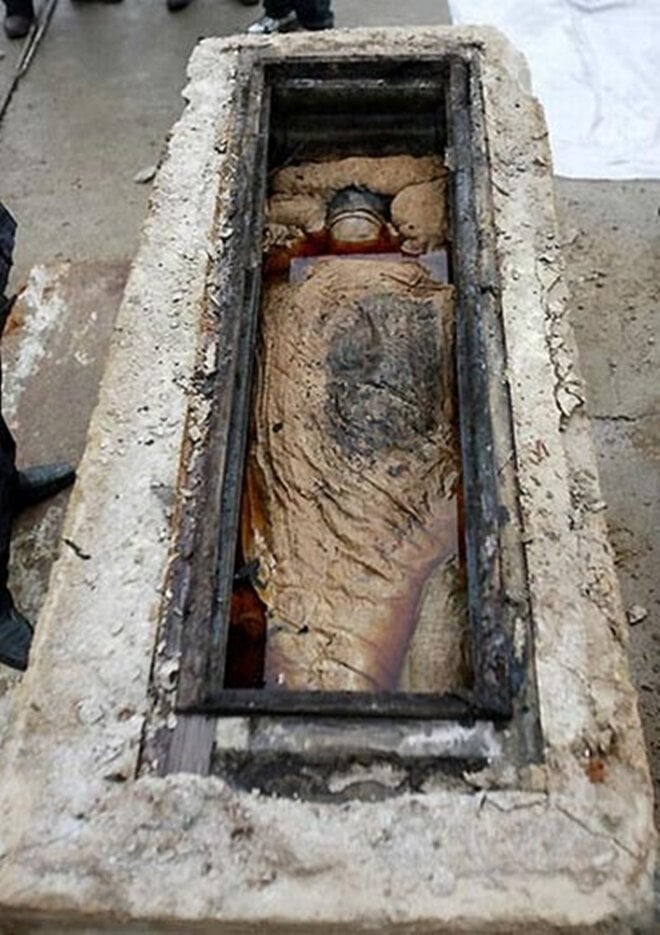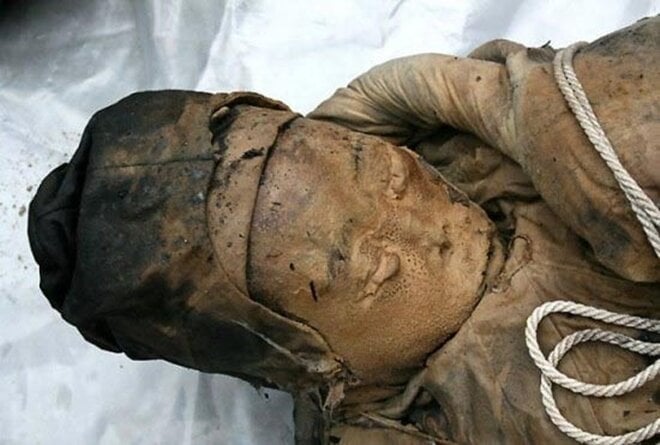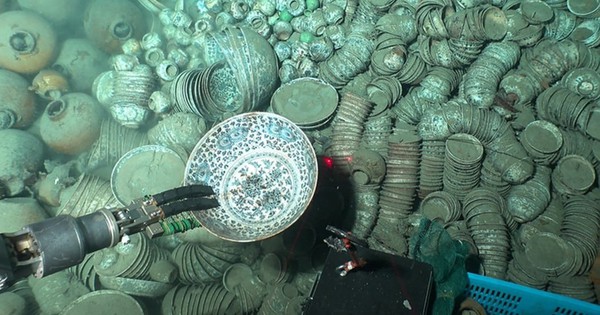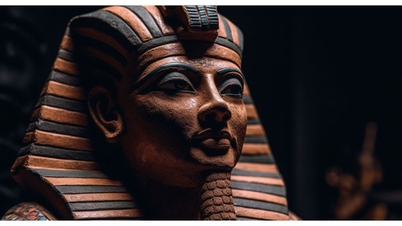In 2011, in Taizhou, Jiangsu, China, a group of workers were digging to prepare for the widening of a road. They were digging deep under the surface when they hit a very hard object. When it was exposed, they realized it was a large coffin. The workers immediately contacted a team of archaeologists from the Taizhou Museum.

Underneath the bedsheets, experts found the body of a woman. (Photo: Sohu)
After examining it, archaeologists determined it was a triple coffin. When they opened one of the coffins, they saw layers of silk and linen covering it, which was covered in a brown liquid. Underneath the bedsheets, experts found the remains of a woman.
What is remarkable is that this body is almost intact, including her body, hair, skin, clothes and jewelry. Even the woman's eyebrows and eyelashes are still intact.
Based on the clothing and jewelry, archaeologists determined that the coffin and the woman were from the Ming Dynasty, dating from 1368 to 1644.
The woman was dressed in traditional Ming Dynasty clothing and wore a green ring. From the high-end jewelry and silk coverings she wore, experts believe she was a member of the aristocracy.

What is special is that this body is almost intact. (Photo: Sohu)
The coffin also contained bones, ceramics, ancient texts and other relics. Experts do not know whether the brown liquid inside the coffin was used to preserve the body or if it was simply groundwater seeping into the coffin.
According to the explanation of archaeologists, the woman's body could be preserved in a perfect environment to keep its integrity. If the temperature and oxygen level in the water are moderate, bacteria cannot grow and the decomposition process can be slowed or stopped.
The discovery gives researchers insight into the customs, lifestyles and daily lives of people during the Ming Dynasty. It also opens up new questions about the conditions that allowed the bodies to be preserved for hundreds of years.
Quoc Thai (Source: Sohu)
Source


![[Photo] "Exposing letters" in the flood center of Lang Son](https://vphoto.vietnam.vn/thumb/1200x675/vietnam/resource/IMAGE/2025/10/10/1760080117518_ndo_br_z7101324112737-07cd4d1c01801a8ccf4ae0cbaf31c4a3-507-jpg.webp)
![[Photo] Ho Chi Minh City is brilliant with flags and flowers on the eve of the 1st Party Congress, term 2025-2030](https://vphoto.vietnam.vn/thumb/1200x675/vietnam/resource/IMAGE/2025/10/10/1760102923219_ndo_br_thiet-ke-chua-co-ten-43-png.webp)



![[Photo] Unique Phu Gia horse hat weaving craft](https://vphoto.vietnam.vn/thumb/1200x675/vietnam/resource/IMAGE/2025/10/10/1760084018320_ndo_br_01-jpg.webp)































































































Comment (0)